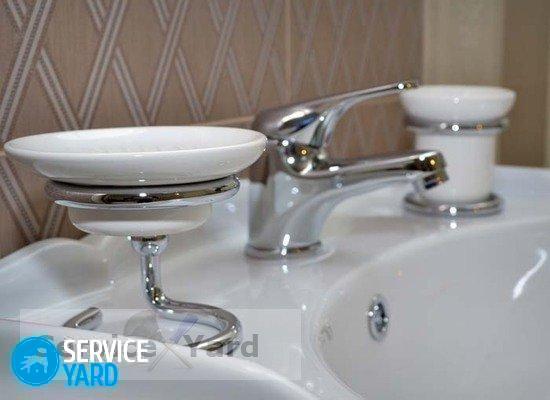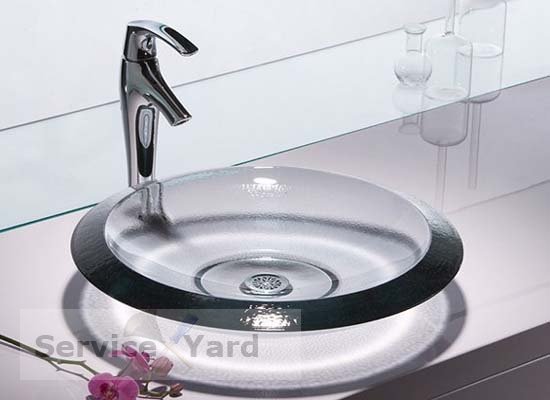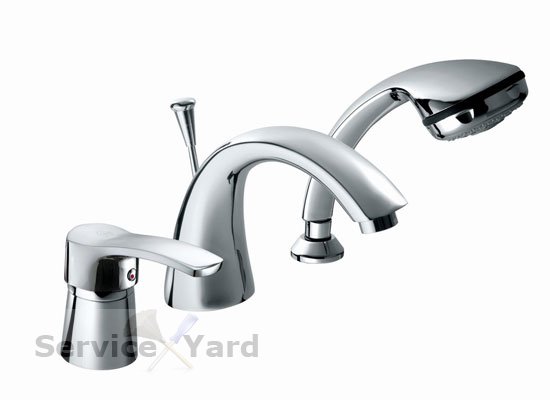How to get rid of rust?

Rust is a destructive phenomenon of the interaction of metal with oxygen in the air. Iron oxide can turn the metal elements of communications and all kinds of plumbing installations into dirty brown flakes. If a metal product is rusted - save money on buying and replacing with a new one, it is better to study on your own how to get rid of rust at home.
to contents ↑Rust Removal Methods
Rust can be removed using the following methods:
- mechanical;
- chemical;
- electrochemical;
- folk.
to contents ↑Important! Each case requires its own individual approach. For example, somewhere it is enough to remove the rusty coating with a metal brush from the reinforcement or tin immediately before painting, and in some cases, chemicals containing alkalis and acids are necessary to get rid of rust.
Method number 1. Mechanical
 The name of this method itself implies a mechanical effect on the product using abrasive materials and a manual or mechanized tool. To get rid of rust on the metal, it is necessary to use special metal brushes, emery cloth or abrasive wheels. This method is advisable to apply to remove corrosion from surfaces having large areas and more even shapes.
The name of this method itself implies a mechanical effect on the product using abrasive materials and a manual or mechanized tool. To get rid of rust on the metal, it is necessary to use special metal brushes, emery cloth or abrasive wheels. This method is advisable to apply to remove corrosion from surfaces having large areas and more even shapes.
First of all, these above surfaces must be cleaned of foreign impurities and, only then, using a metal brush or an abrasive wheel worn on a drill, remove rust until a clean surface appears.
Important! You can also use a grinding machine for this purpose.
If the contaminated surface has a complex shape or rust has appeared in hard-to-reach places, you can get rid of rust manually.
Important! Use abrasive sand paper or metal brushes for this purpose.
The mechanical method is applicable only to products with sufficient metal thickness. Make sure that the processing position does not become thinner than the rest of the product.
to contents ↑Important! Using a mechanical method of cleaning, pay special attention to the protection of hands, eyes, open parts of the body. Strictly observe safety rules when working with an electric tool.
Method number 2. Chemical
This method involves the use of a chemical agent for rust. It should be used to clean small parts with complex shapes.
Important! Please note that you can spend from several minutes to several hours on the process of removing traces of corrosion. It all depends on what composition you will apply.
Safety precautions
As a rule, chemical compounds are aggressive liquids that react with metal and iron oxide (rust), so adhere to these rules:
- Using rust chemical solvents, work in a well-ventilated, ventilated area, as various harmful fumes, including acid fumes, may be released during the cleaning process.
- Handle chemicals very carefully, as they can cause a chemical burn if they come into contact with the skin or mucous surfaces of the human body. Use only protective clothing.
- Strictly follow the instructions for the selected rust remedy, as the method of application may be different.
Important! In case of contact with the skin, rinse immediately with large amounts of water and contact a hospital.
Types of Solutions
To get rid of rust at home, you can use various types of chemicals.
Chemical solvent
It is the most popular and modern rust control agent. In its composition, phosphoric or concentrated oxalic acid, which contribute to the complete removal of oxide from the metal.
It seems that this rust remover is like an aerosol paint and can also be used as a primer for a paint coat. Use solvent as follows:
- With a stiff brush, first remove the exfoliating rust.
- Apply solvent to the rusted area evenly.
- After 30 minutes, wipe the area with a rag.
- After removing corrosion, treat the metal with a tool that prevents its appearance.
Rust converter
To date, such a rust remedy is quite popular. It is able to stop the corrosion process. In other words, this tool converts rust into a protective film according to the principle of conservation.
The rust converter stops its development and makes it perform a completely different function: rust changes its composition to chemically pure iron.
Important! The disadvantage of using this tool is the change in the color of the metal surface (it turns blue-violet).
Converters are available in the form of a spray, solution and suspension. Before getting rid of rust by means of such a chemical, it is necessary to clean the metal from exfoliated rust.
to contents ↑Important! Remember that after using the rust converter, the surface must be painted.
Method number 3. Electrochemical
To use the electrochemical method, a direct current source and a special solution — an electrolyte — are required. The outline of your actions to get rid of rust in this way will be as follows:
- Place the part to be cleaned in the electrolyte.
- Directly connect the negative contact of the current source directly to the part so that it does not come into contact with the electrolyte.
- Connect the positive contact to the electrolyte.
to contents ↑Important! When voltage is connected, an electrochemical reaction will begin, which will separate the iron oxide from the part. Rust will settle at the bottom of the mortar. The cleaning process is much faster due to electricity. It can be used both for small parts of complex shape, and for large parts, it all depends on the presence of electrolyte and containers.
Method number 4. Folk remedies against rust
The use of folk remedies relates more to the chemical method. However, these tools allow you to clean small contaminants without the use of special reagents and electrolytes, in addition, they are less dangerous.
Important! The effectiveness of these rust remedies is not so high, but it is possible to clear small parts from corrosion deposits with these agents.
 Many products available in every home can become reliable helpers in the fight against iron oxide. Let's consider some of them.
Many products available in every home can become reliable helpers in the fight against iron oxide. Let's consider some of them.
Lemon or citric acid
To get rid of rust, buy a small package of citric acid in any supermarket and use it this way:
- Pour acid into the prepared container.
- Pour enough hot water into the container so that the item being cleaned is completely immersed in it.
- Put the item in the solution overnight.
- In the morning, take out the product, rinse and dry.
White vinegar
Vinegar comes in contact with corrosion, dissolving it and removing it from the surface:
- Soak the product in white vinegar.
- Wait a few hours.
- Scrape off the rusty paste from the metal.
Important! To make it convenient for you to get rid of rust, consider these tips:
- If the item is large and cannot be completely immersed in vinegar, then pour the product on the surface to be cleaned and allow time for etching. In this case, you can simply wipe the product with a cloth dampened with vinegar.
- Dip aluminum foil in vinegar, use foil instead of a brush to remove rust. It is less coarse than a steel washcloth, but nonetheless removes rust.
- If you use regular vinegar, soak the rusty product in it for 24 hours, and then rinse. This method does not require intensive cleaning.
Soda
Baking soda is also a good rust remedy if used this way:
- Dilute baking soda with water to the consistency of thick sour cream.
- Spread a rusty place with a solution.
- Leave the product for 30 minutes to etch.
- Clean the surface of baking soda with a toothbrush.
- Use a metal brush to remove rust.
- Rinse the surface with water and dry.
Important! For greater efficiency, perform the procedure several times.
Potato and laundry soap
Fresh potatoes contain oxalic acid, which will help you in the fight against iron oxide. If the rusty spot is small (for example, on a knife blade), sprinkle the sliced potato with salt and clean the product with it. You can hold the potato and salt in a rusty area for about 15 minutes, then rinse and dry.
To get rid of rust, you can use potatoes together with laundry soap. In this case, proceed as follows:
- Cut the vegetable in half.
- Put laundry soap on the cut - this will make rust removal easier.
- Put the potatoes on the metal for several hours.
- Rinse and dry.
Important! To reuse this method, cut off the piece of potato that was involved in the reaction and apply more soap on it, then hold the potato on the product for a longer time. If you do not have laundry soap, use baking soda and water together with potatoes.
Coca-Cola and other sparkling water
For the first time, American housewives began to use Coca-Cola, who noticed its effectiveness in the fight against rust: it is all about phosphoric acid. Place the part in the drink and leave it to rust, then rinse and wipe with a dry cloth.
Alka Seltzer
This tool can be used to get rid of rust on aluminum dishes:
- Place the dishes to be cleaned in a bowl.
- Fill with water
- Add 4-6 tablets of the product.
- After 10 minutes, rinse off the rust with clean water.
- Wipe and dry the dishes.
Oxalic acid
 When using this product, take precautions: wear rubber gloves, protect your eyes with glasses, and clothes with a bathrobe.
When using this product, take precautions: wear rubber gloves, protect your eyes with glasses, and clothes with a bathrobe.
Important! Never breathe fumes of this acid.
Oxalic acid must be used in this way:
- Wash the rusted item with dishwashing detergent.
- Rinse the product with water and dry thoroughly.
- Mix 25 ml (5 tsp) oxalic acid with 250 ml of warm water.
- Dip the item in the solution for 20 minutes.
- Clean the product with a brush.
- Rinse thoroughly and dry.
How to remove rust from the toilet?
When water flows from the tank, a thin red strip appears on the surface of the toilet bowl. To get rid of contamination, first repair the drain, and then remove the contamination with a special toilet cleaner. Leave the product for an hour, then wipe it thoroughly with a cloth and rinse with water.
to contents ↑Important! You can use other aggressive rust removers: Domestos alkaline, Cillit, Coca-Cola or Sprite acid, dry oxalic acid (soak a wet cloth in dry acid and wipe the rusty area).
How to prevent rust?
Remove traces of rust from metal surfaces in a timely manner. For this, you can use household chemicals, food products, but it is better to prevent the appearance of iron oxide by following simple recommendations:
- Keep the metal dry.
- Dry the metal thoroughly after it comes into contact with water.
- After removing corrosion, take care to protect the surface: carry out anti-corrosion treatment, paint or varnish the surface.
- If the metal surface is smooth, then apply a primer - aerosol, roughen the rough surface with a putty that will fill all the bumps and depressions.
- Paint the metal better with a brush to ensure better grip.
- Coat the paint with a transparent coating in order to reduce the rate of oxidation.
Stock footage
We wish you good luck in the fight against rust!
- How to choose a vacuum cleaner taking into account the characteristics of the house and coatings?
- What to look for when choosing a water delivery
- How to quickly create comfort at home - tips for housewives
- How to choose the perfect TV - useful tips
- What to look for when choosing blinds
- What should be running shoes?
- What useful things can you buy in a hardware store
- Iphone 11 pro max review
- Than iPhone is better than Android smartphones



